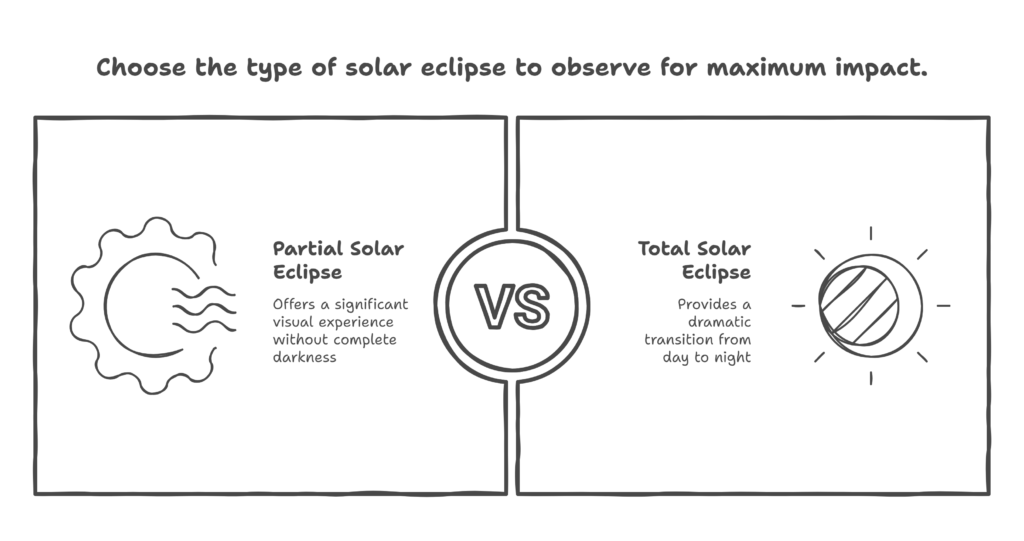Partial Solar Eclipse Shines Today
GLOBAL — A partial solar eclipse occurred today, Saturday, March 29, 2025, dazzling skywatchers across parts of the world.

The event, where the moon covers part of the sun, was visible in Europe, Africa, and North America. It began at 4:50 a.m. EDT and ended at 8:43 a.m. EDT. India, however, stayed in the dark because the moon’s shadow didn’t reach the country.
What Happened in the Sky?
This partial solar eclipse kicked off over the Atlantic Ocean. The moon slid between Earth and the sun, blocking some sunlight. At its peak, around 6:47 a.m. EDT, it covered up to 66% of the sun in places like Reykjavik, Iceland. People in cities like New York and London saw a crescent sun at sunrise. The event lasted about four hours total. Sadly, India’s position meant no view this time.

A partial solar eclipse happens when the moon doesn’t fully line up with the sun and Earth. Unlike a total eclipse, it doesn’t turn day to night. Still, it’s a big deal for astronomy fans. “It’s a beautiful sight, even if it’s not total,” said Dr. Rajendra Prakash Gupt, head of Jiwaji Observatory in Ujjain. He noted that India missed out because the shadow path skipped Asia entirely.
Why India Didn’t See It
India’s sky stayed clear of this eclipse for a simple reason: timing and location. The event happened during India’s afternoon, from 2:20 p.m. IST to 6:13 p.m. IST. But the moon’s shadow — called the penumbra — swept over other continents instead. Places like northwest Africa, eastern Canada, and parts of the U.S. East Coast got the show. India was too far east to catch it.
This isn’t rare. Solar eclipses happen two to five times a year, but not every spot on Earth sees them. The moon’s orbit tilts a bit, so perfect alignment is tricky. In 2025, India gets just one visible eclipse — a total lunar one on Sept. 7-8. Today’s partial solar eclipse followed a total lunar eclipse on March 14, which India also missed due to daytime hours. Skywatchers here have to wait for the next big moment.
A Global Event with Local Views
For those in the eclipse zone, it was a treat. In New York, people saw about 33% of the sun covered at sunrise. London got a smaller bite, with 11% obscured. The Caribbean, Siberia, and parts of Africa joined in too. Safety was key — experts warned against looking directly at the sun. Special glasses or pinhole projectors were a must to avoid eye damage.
Back in history, eclipses amazed and scared people. Today, we know they’re natural. Scientists use them to study the sun’s edge, called the corona. This eclipse didn’t show the corona much, since the sun stayed partly visible. Still, it got people talking. Posts on X buzzed with excitement from viewers worldwide, though some in India shared their disappointment.
What’s Next for Sky Fans
India might have missed today’s partial solar eclipse, but there’s more to come. The year 2025 has another partial solar eclipse on Sept. 21-22. That one won’t reach India either — it’s set for New Zealand and Antarctica. The next solar eclipse visible in India is years away, on May 21, 2031. It’ll be an annular one, showing a “ring of fire” in the south.
For now, Indian skywatchers can enjoy live streams online. NASA and other groups shared the event in real time. It’s a chance to see what others saw, even from afar. This eclipse reminds us how big and busy our planet’s sky is. It also shows why timing matters in astronomy. Missing one just builds excitement for the next.
Looking ahead, experts say planning is key. Mark your calendars for September’s lunar eclipse if you’re in India. It’ll be a full moon turned red — a total lunar eclipse visible at night. Unlike today’s event, that one won’t hide from Indian eyes. Until then, today’s partial solar eclipse stays a global story with a local twist: India watched from the sidelines, eager for its turn.